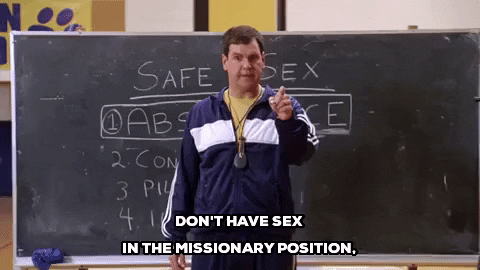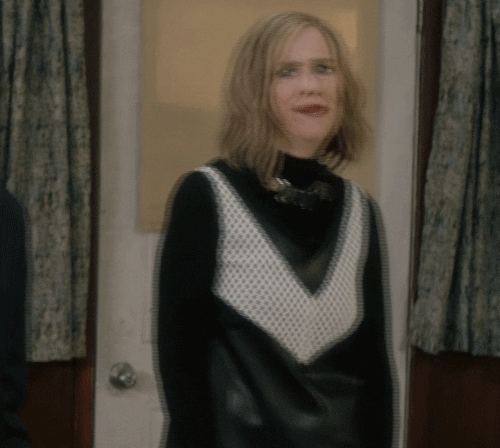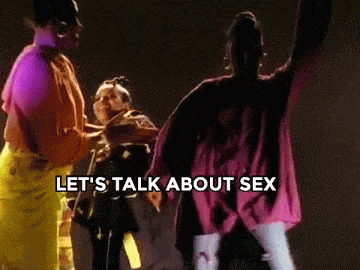How to talk to kids about porn
Yes, you have to :(
Welcome to Techno Sapiens! Subscribe to join thousands of other readers and get research-backed tips for living and parenting in the digital age.
Summary for Busy Sapiens
The average age of exposure to porn may be as early as 11 or 12.
The acronym SEX ED can guide conversations.
S - Set the scene. Ask questions, provide a definition.
E - Encourage further conversation. Normalize curiosity, remind them they can talk to you.
X - eXpress your values about sex and porn.
E - Educate. Tell them that porn is not realistic or a good way to learn about sex.
D - Direct to other resources (books, podcasts, websites).
Pornography is one of those topics that, as a parent, makes us want to plug our ears, cover our eyes, and slowly back into the nearest closet, emerging only after our children head off to college.
Surely we don’t need to talk to our kids about it, do we?
You probably know where this is going.
Decades of research suggest that parent-teen communication about sex is linked to teens’ safer sexual behavior. And now, with anywhere from 30-65% or more of kids being exposed to online porn, studies are highlighting the importance of discussing porn, too.
Sigh. Being a parent is hard. Especially now, with smartphones, iPads, and laptops providing our kids with instant access to, well, everything. We’re suddenly dealing with a lot of issues that our parents never had to. If you are dreading this conversation,1 have no idea where to start, or saw the subject line of this email and simply thought nope, you are not alone.
Let’s talk specifics
When researching the ‘how to talk to your kid about porn’ issue, you come across a lot of useless vaguery—statements like: “help your child understand that the depictions of sexuality in pornography are inconsistent with healthy adult relationships.”
Okay right, sure, but how? What do you say? When do you bring it up? We seem uncomfortable going into detail, even when we’re thinking about having these conversations, let alone actually having them.2
So, I’m going to try to get into the specifics here, including actual talking points and language you can use to have these conversations.
Of course, every family is different. I know that this guidance is not going to work for everyone, and that some parents will decide this approach isn’t right for them (and that’s okay!). But I hope that, for parents who do want to start talking to their kids about porn, this can get you started.
Also, there will be gifs. Because we need them right now.
What age should I start having these conversations?
The timing of these conversations will depend somewhat on your child’s level of maturity and independent access to devices like a phone or iPad. In general, the average age of first exposure to porn may be as early as 11 or 12, so this (or slightly before this) may be a good time to start having these conversations in earnest.
Yes, this feels way too early.3
And yet, we want kids to be equipped before a mistyped Google search leads them astray.
Ideally, the porn conversation is just one of many open, honest, age-appropriate, and non-judgmental conversations about bodies and sex that we’re having with kids from the time they are young.
But this is much easier said than done, and this will look very different for every family. If you haven’t been having these conversations, do not panic! You’re certainly not alone, and it’s never too late to start.
With this in mind, the guidance below is intended for tweens and early teens, in roughly the 10 to 14 age range.
I’m overwhelmed.
It’s easy to get overwhelmed by the statistics, and the talking points, and the memories of your ninth-grade health teacher warning you about teen pregnancy.
But the truth is, when you approach a conversation about porn with your child, you really only need to have one goal: to have more conversations in the future.
I know. More conversations?! We have to talk about this more than once? Kick us while we’re down.
But in some ways, the knowledge that we don’t need to—and in fact, we probably shouldn’t—try to cover everything our children need to know about porn in a single conversation is freeing. We get multiple tries to get it right.
So, because our only goal is to set ourselves up for more conversations in the future, we can stop worrying so much about what we actually say. We don’t need to get the words exactly right. Instead, we can focus on how our kid feels.
How we don’t want them to feel is shamed, judged, or accused. How we do want them to feel is supported in knowing that it’s totally normal for them to be curious about sex, and that we’re always available to answer questions or talk.
Okay, so what do I actually say?
All right. Let’s imagine you’re ready to have a conversation. You’ve given yourself a little pep talk. You’ve stretched, you’ve loosened up, you’ve hydrated. You’ve given yourself a stern look in the mirror. You can do this.
Now, you’ve found a time when you and your child are alone and, preferably, doing some kind of activity. Going for a walk or driving in the car are always good options: they’re time-limited and involve minimal eye contact, which can make both parties (slightly) more comfortable.
Here are some talking points you may want to cover, along with ideas for what you might actually say. Here’s a little acronym to help remember what to say: SEX-ED4
S - Set the scene
E - Encourage further conversation
X - eXpress values
E - Educate
D - Direct to other resources
Final reminder: these talking points will not work for everyone. You might cover some of them, or all of them, depending on your child’s age and maturity. You know your child, and what will (and will not) work for them, best.5
Set the Scene
Introduce the conversation in a way that clarifies it has nothing to do with something your child has done or said, to avoid putting them on the defensive.
Hey, I’ve been meaning to talk to you about something now that you [have your own phone / are spending more time online / are using the iPad / are getting older]. I want to talk to you about porn because I think it’s an important topic to know about when you’re spending time online.
[Alternatively, you can blame me: I was reading this article today about the effects of porn on people’s relationships and health. Is that something you’ve heard anything about?]
Acknowledge that it can feel awkward or embarrassing to talk about sex and porn, and that this is normal.
I know this can feel weird/embarrassing/awkward to talk about this at first–I feel awkward too. But just because we feel a little weird about it, doesn’t mean we shouldn’t be talking about it. In fact, I think it’s important for people to talk about topics like sex and porn.
Start by asking questions to gently open up the conversation and get a sense of what your child already knows. One useful strategy is to ask about people their age, rather than them, personally. This makes it less threatening. You can pretend you are old and out-of-touch [obviously, just pretending], and need them to explain things to you. Some ideas:
Do you ever hear people talking about porn? What do other people say about it? What have you heard or seen about porn? What do you think about what you’ve heard or seen? How do you think porn affects people your age? There are no right answers here, and it’s okay to be honest.
Offer a basic definition if they don’t know what it is, or seem to have some misconceptions about what it is.
Porn is short for pornography. It’s pictures or videos of sexual behavior that are made to be entertainment for adults.
Encourage further conversation
Reassure them that that it’s normal to be curious. Remember, we want to avoid shame because we want to increase the likelihood that they come to us with questions or concerns in the future. We want to convey that there’s nothing shameful about sex.
It’s totally normal to be curious about bodies and sex.
Remind them that you’re always a resource.
I know it can be uncomfortable, but I want you to know that you can always come to me with questions, concerns, or if you just want to talk.
eXpress Values
Express your values. This will be something you want to think through before having this conversation, and will, of course, depend on your personal beliefs. You might explicitly say I don’t want you watching porn, or you might choose not to take quite as definitive a stance. Here are some additional ideas to get you started:
Sex should always be fun and feel good for both people, and it should always feel comfortable and safe. Healthy sexual relationships are based on trust, mutual respect, communication, and consent. Most healthy sexual relationships involve emotional and physical intimacy. You don’t usually see these types of things in porn.
Educate
Make it clear that porn is not a good way to learn about sex. It is not intended to be educational.
Porn is made to be entertainment for adults. It’s not supposed to be educational. The people in porn are actors who are getting paid. Sometimes people think porn is a good way to learn about sex, but porn really doesn’t show sex, bodies, or relationships in realistic ways.
You might even use sex educator Shafia Zaloom’s metaphor, which she shares in this New York Times article: “I tell my students, ‘Sometimes people look at porn because they want to learn about sex, but that’s like watching The Fast and the Furious to learn how to drive.’”
Indicate that porn is not realistic, and does not reflect most people’s sexual experiences.
I think it’s important for you to know that porn is not realistic. It’s not an accurate depiction of the types of sex and relationships that most adults are having or want to have. Performers’ bodies are also often altered, and scenes are edited, to achieve a certain look.
Share concerns about the types of free porn that are typically available on popular websites. In addition to being unrealistic, the sex depicted may send confusing messages about consent; is often degrading to women, racial minorities, and other groups; and in some cases, may even be violent or abusive. It typically does not depict healthy communication or safe sexual practices.
I have some concerns about porn that I want to let you know about. A lot of times, the porn that’s available online can be degrading to women and to people of certain races or ethnicities. It doesn’t usually show people talking about consent, communicating in healthy ways, or using condoms or other protection. Sometimes, porn can even be violent.
Ask whether your child has questions. This is a good way to keep the conversation open and to check for understanding
What do you think? What questions do you have for me?
Direct to other resources (including yourself!)
Provide resources—books, websites, podcasts—for your child to learn about sex, and remind them that you’re always a resource, too. Here are two good lists.
We talked about how porn isn’t educational, and that it’s totally normal to want more information about bodies and sex. I got you these books, and will send you some links to websites with accurate information so that you can get your questions answered. And you can always come to me with questions, too.
This all sounds great in theory. But what do I do if…
…my kid is younger?
For kids under age 10 or so, you might keep it more general, with the goal of simply conveying that if they ever come across porn, they won’t be in trouble, and you want them to come to you to tell you. So, you might say:
Now that you’re [using the iPad more/watching videos on YouTube] I want to let you know that there are some things on the Internet that are for adults, not for kids. For example, you may come across videos or pictures of adults who are naked. If you ever see something like this, I want you to come to me and tell me so that we can talk about it. You won’t be in trouble.
…my kid is older?
For older teens—those in roughly the 15 to 17 year old range—you might have more in-depth conversations about the depictions of sexuality in porn or the porn industry. Or maybe you consider separately reading articles like this NYTimes one, or part one of this Techno Sapiens series, and then discussing.
As in most teen conversations, the goal is to do more listening than talking, and more asking questions than lecturing, to get your teen thinking critically about these issues.
…I’ve never had this conversation with my 12-year-old, and now I just found out her friend showed her something inappropriate?
This is a good opportunity to start talking. You’ll want to be especially careful when raising the conversation that you avoid blame, judgment, or accusations. Instead, try something that will encourage future conversation, like:
Thank you so much for telling me. I’m so glad we’re having the chance to talk about this.
Then, if it seems appropriate, follow some of the talking points above.
…I’ve never talked to my 10-year-old about porn, and I just found out he searched for “sex” on his iPad?
Try to avoid panicking. (If only it were that easy, I know). But this comes up more frequently than many parents would expect.
Similar to the above situation, start with something non-accusatory. Reassure them they are not in trouble. Normalize their curiosity. Ask questions.
You might start with something like: Hey, I noticed in your search history that you may have come across some adult websites. You’re not in trouble, and it’s totally normal to be curious about sex. But I want to talk to you about what you might have seen online.
Then, if it seems appropriate, follow some of the talking points above.
…I tried to talk to my 13-year-old about porn, but they got so embarrassed they didn’t say anything?
This is very common, and nothing to worry about. The first thing to know is that kids internalize way more of what you say than it often feels like in the moment. You don’t have to force them to talk about it, but you might try bringing it up gently once or twice more.
You might try bringing it up when time is limited—like when you’re in the car, a few minutes away from home—so they know the conversation will be short. Or bringing it up, but promising them at the outset that you’ll only talk about it for two minutes, and then you’ll be done.
Either way, you can reassure them that it’s okay and normal to feel uncomfortable, and that you’re always there and open to discussing when they’re ready.
Further Reading
The Porn Conversation. Excellent conversation guides for parents of kids ages 8-18, including specific conversation starters. Also, adorable cartoon drawings of menstrual pads and condoms.
Sex Positive Families. Resources for parents and kids on a number of sex-related topics. And an overview of how to approach the conversation about porn.
Common Sense Media: tips for talking about porn and blocking inappropriate websites. Also a guide to parental controls.
More guides to parental controls across tons of apps and devices.
More on how to talk to kids about porn in The Atlantic and The New York Times.
A quick survey
What did you think of this week’s Techno Sapiens? Your feedback helps me make this better. Thanks!
The Best | Great | Good | Meh | The Worst
I’m already dreading this conversation, and my child can’t yet speak. Unless you count grunting and pointing, and whining when he doesn’t get what he wants. Which, now that I’m saying it, does sound kind of like a teenager?
I’ve had a lot of conversations about porn since last week’s newsletter came out. I should have probably been prepared for this. Did I anticipate discussing with a colleague why a person might search for “pokemon” on Pornhub? Or chatting with my dad about porn’s sexual objectification of women? I did not. But here we are.
In case you’re wondering what I was doing at age 11…this week, a close friend reminded me that, when we were in sixth grade, we were using my parents’ 1997 Sony camcorder to make claymation videos in the basement. Like, adjusting a clay figure’s arm one-eighth of an inch, pressing the camera’s red “record” button, recording a millisecond of footage, and then repeating. For hours.
I have mixed feelings about the use of acronyms in parenting. On the one hand, it seems totally unrealistic that one would, in the midst of a conversation with their child, suddenly recall and use a mnemonic like this. On the other hand, my husband and I took an excellent online class on baby sleep when my son was born, and reciting the course’s acronyms to myself at 3AM amidst the backdrop of a screaming baby was oddly comforting. So, to each their own!
A note that these talking points are meant to guide conversations with your kids about porn, and are not an indictment of what any adults are choosing to do porn-wise in their own time. That is your business. Again, to each their own!







